Archive for the ‘Home Renovations’ Category
Edmonton Home Maintenance Feature: Getting Ready for Spring
Sunday, March 16th, 2014In a good year the winter in Edmonton lasts until mid-June so technically the season of Spring has a unicorn status as far as Edmontonians are concerned. However, that doesn’t mean we avoid Spring clean-up. Once the snow melts there is a significant amount of leaf or debris build-up around the exterior of your house and a few other problems that every home owner should attend to before enjoying the sun. Read below for a list of home maintenance items to get your house ready for Spring:
Inspect your gutters. The winter can make them loose or leaky and improper drainage can result in water in the basement. Ensure that downspouts drain away from the foundation and free of any obstructions.
Examine your yard for low areas. Rain in the Spring can lead to yard flooding which can lead to foundation flooding and damage.
Check out the wood trim around windows, doors, railings and decks. Make repairs to these items before the rain does more damage to the exposed wood.
Take a look at the chimney exterior for any signs of damage. Get the flue (the duct pipe that lets out the exhaust gases from the fireplace) cleaned and inspected by a certified chimney sweep.
Inspect the hose faucets for freeze damage. A proper inspection would be turning on the water and placing your thumb over the opening, if you can stop the flow then it is extremely likely the pipe inside the home is defective and should be replaced.
Look at the concrete for signs of cracks or shifting. Every exterior slab should drain away from the foundation. Fill in the cracks with crack filler or silicone caulk.
Source: Full Scope Home Inspections Inc.
Investment strategies to fund your retirement
Thursday, March 13th, 2014When saving, greater returns, even if accompanied by greater volatility, can reduce the amount an investor has to save. Saving $5,000 per year with no income will take 20 years to reach $100,000. A moderate investor can, on average, reach double that amount by investing the same $5,000 mid-year for the same 20 years.
Feel free to contact me or visit my website for more information.
Douglas J. Bodtcher
Investors Group Financial Services Inc.
780-448-1988 ext. 284
Douglas.Bodtcher@investorsgroup.com
Pet-Proofing Your Home: A Room-by-Room Guide
Sunday, March 9th, 2014Everyone who gets a dog or cat soon learns that a certain amount of vigilance goes with pet ownership. Puppies and kittens especially can get into everything and escape through the tiniest opening. Some of the better-known dangers are toxic plants and food. But do you know about the other dangers that might lurk in your home and garden? From the bathroom and laundry room to the office, kitchen, garage and even the great outdoors, there are some expected and unexpected hazards your pet might face.

Also remember, while dogs may seem to be more trouble-prone than cats, cats can get into far more — and higher — spaces in your home.
There’s even a bonus to these precautions: a tidier house. Storing things safely away after using them also turns out to be much easier than coaxing them away from a pet determined to destroy them, or even worse, making an emergency trip to the vet. And it will leave you with much more room for you and your pet to play with the things that are safe.

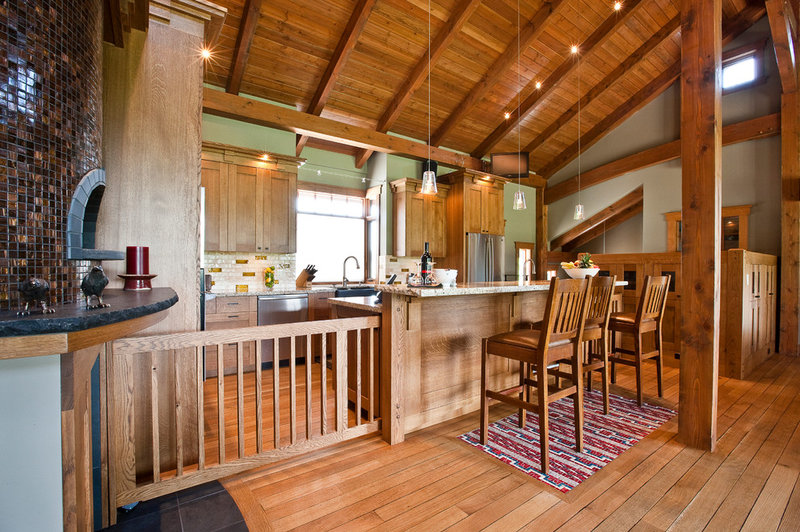
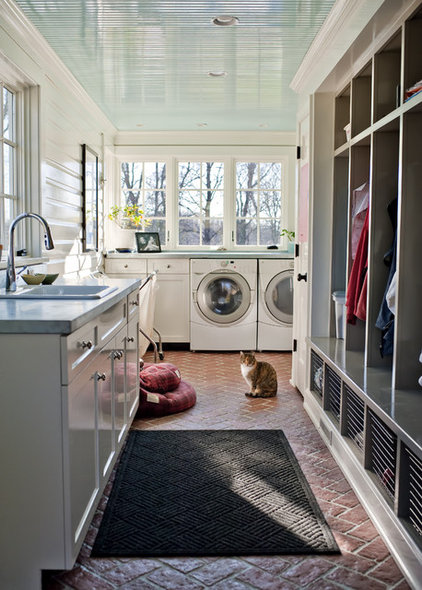
Dogs in particular may be tempted to chew on, and potentially swallow, towels and stray socks (and you were blaming the dryer for eating them), which can lead to severe gastrointestinal problems.

Washers and dryers can be a tempting spot for a nap, especially for cats, and you may not notice them if you put in a load of clothes. Keep the doors on appliances closed.

Another overlooked danger is fire-starter sticks. They’re somewhat sweet, and some dogs can’t resist eating them.

As a general precaution, put anything you value or anything that’s a chewing or choking hazard (puzzle pieces, small toys and so on) out of reach when you’re not around.

Be sure that if pets can get out, they’ll be heading into a safe place, such as a fenced yard. Otherwise, screens are a great compromise. You can even find ones that are almost invisible.

One potential serious hazard, though, is mothballs. They’re toxic, so if you use them, be sure they’re in a place your pet absolutely can’t reach.
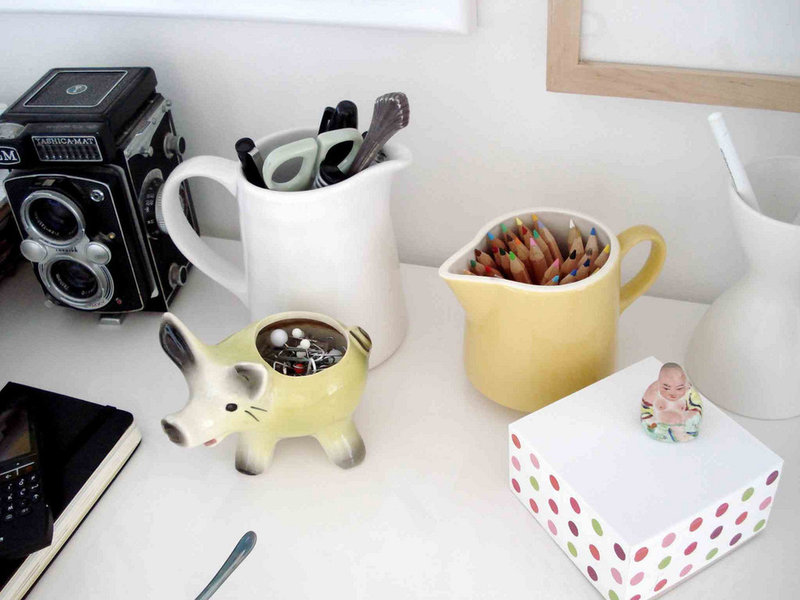

If you live in a snowy climate, be aware that de-icing compounds may also contain dangerous chemicals, so look for ones that are safe for pets.


Compost, cocoa-based mulches, pesticides, insecticides, fertilizers and other garden chemicals can all cause problems for pets. Your first line of defense is keeping things stored away safely and out of reach.


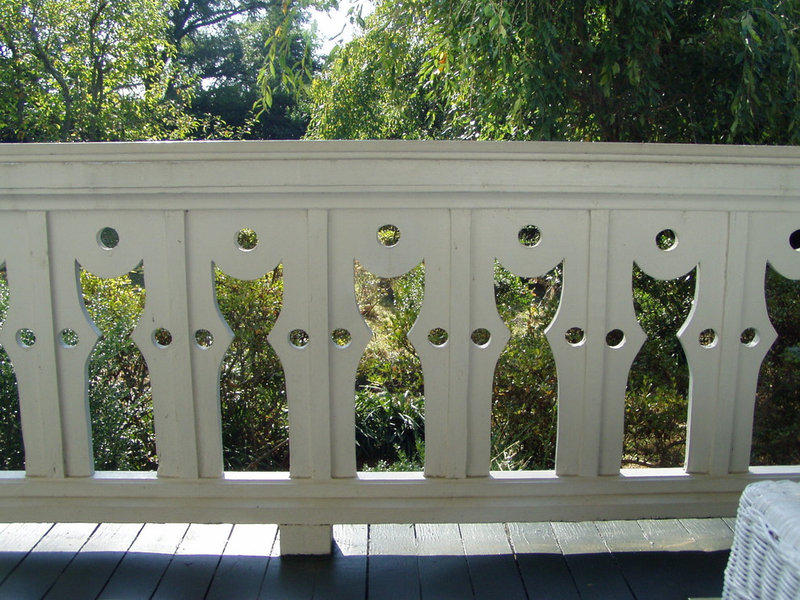




Ponds are also prone to forming algae, which may be toxic by itself or because of the chemicals added to destroy it.
7 Ways To Beautify Your For-Sale Home This Winter
Thursday, March 6th, 2014You hear it all the time – curb appeal is critical when selling your home, but it can be challenging to make your house stand out when it’s covered in white fluffy stuff. Still, you need to capture those buyers – and as I always say – selling your house is like dating… a pretty face will get them in the door!
Here’s 7 tips to make your home look appealing, even in the dead of winter.
Whenever possible, have the photos of your house taken on a clear, snow-free day. These are the photos that will live online for the entire time your home is on the market, and you want to be able to show buyers what your house looks like the other 9 months of the year as well.
Lights In The Snow – Make the house look fantastic at night! Once a buyer is interested, he or she will usually drive by multiple times reviewing the house himself or showing friends and family. Accent lighting will really dress up the house at night. Use up-light, low voltage lighting at the base of your landscaping and up your walkway to create wonderful light and shadow patterns. It’s very dramatic and creates an instant designer look as the lights reflect and glisten against the snow.

No Snow Photos – Many homebuyers will first experience your curb appeal via the warm glow of their computer screens or mobile device. Whenever possible, have the photos of your house taken on a clear, snow-free day. These are the photos that will live online for the entire time your home is on the market, and you want to be able to show buyers what your house looks like the other 9 months of the year as well.
Keep Shoveling – If your house is on the market – pick up that snow shovel and start plowing. You never know when a potential home buyer will be dropping by with an agent for a showing, or even just driving by – never leave for the day to go to work with snow piled up on the walkways and driveways.
Send Santa Packing – Christmas is way over folks! It’s time to lose the reindeer and those twinkle lights around every window. Let’s not distract your buyers with the Christmas spirit. If Santa and the sleigh are still on the roof or visible elsewhere, send him packing to the North Pole. The only holiday holdover you should consider is a lovely winter wreath on the front door.
Flowers Do Bloom – Take advantage of winter blooming flowers to add a pop of color. Place two flowering potted plants on either side of the door for instant impact. They should be visible from the street and help to frame your front door. Wander around your local home improvement store’s garden center, and depending on your climate, you find flowers that will bloom for you. Some winter wonders include camellias, pansies, cyclamen and Iceland poppies. If you live in a snow-free area, adding in some flower beds with these little winter miracles will do wonders for your house’s appeal.
The Front Door Color Splash – Juxtaposed against all that white snow, a freshly-painted front door will really stand out. Reds, blues and rich greens are all welcoming additions to an all-white outdoor setting.

They All Add Up – Dressing up the front porch is essential. Replace old door handles and locks with new shiny ones. It’s often much easier to replace the door handles and any brasswork than to polish them up! Install a new brass kick board at bottom of the door, add classic large house numbers and even a lovely (and dry!) welcome mat to match the style of the house. These individual items may seem obvious, but together these small, inexpensive changes and often-overlooked details give a captivating welcome.
Source: Forbes.com
Do You Buy or Sell First When You’re Ready to Move?
Thursday, March 6th, 2014Homeowners who decide they’re ready to become move-up buyers face a chicken-or-egg dilemma: Should they sell their current home first and then buy another, or buy a new one and then sell? The answer depends on several factors, including your local market conditions, your financing options and your feelings about potentially moving twice if you sell your home before your next residence is available.
Market Conditions
Before you blithely assume that your real estate market is a buyer’s market or a seller’s market, you need to realize that you must be very specific about the market for your particular neighborhood, the style of home you own, and the price range for your property. In addition, you need to assess the availability of homes that meet your criteria. You’ll need to work with a knowledgeable, professional REALTOR® who can talk to you about how quickly homes that are similar to yours are selling and for how much. On the buying side, you should do some preview shopping to get an idea of what you want and how easy it is to find it. For example, if you must live in a particular, popular school district, you may want to consider buying a home first so that you’re sure you have a place you want.
Financial Options
In an ideal world, everyone would have the funds to pay cash for their next home, but the reality is that most people need the equity from the sale of their current home for the down payment on the next house. One option is to sell your home and then negotiate to rent it back from your buyers, but remember THAT you’ll need to pay them for the rental. Also, lenders will limit the rent-back term to a maximum of 60 days because a rental lasting longer than that would be considered an investment property.
Alternatively, you can temporarily live with friends or family or in a short-term rental while you’re between homes. In that case, you might need to pay for a storage facility for your possessions.
A drawback to selling your home first is that you may be unable to find a home to buy, or you may feel rushed into taking a place that doesn’t meet your expectations.
If you can qualify for the mortgage loan on both your current home and the next home, you can access the equity in your current home with a line of credit. You’ll need to take out the line of credit before you put your home on the market and then you can pay it back at settlement.
You may also be able to borrow money for a down payment from relatives that you can repay after your home sells.
Some lenders also offer bridge loans for transitioning homeowners as long as they have excellent credit and sufficient equity in their current home. A lender can help you evaluate your options.
Risk Aversion and a Plan B
You’ll have to ask yourself what scares you most: selling first and having nowhere to live or buying first and being stuck with two mortgage payments. The answer depends on your finances and your local market, but in either case you should have a back-up plan to deal with the worst case scenario – either another source of income for those mortgage payments or an identified place to live for a few weeks or months while you shop for a home.
Source: Realtor.com
Team Leading Edge RE/Max Elite 780-634-8151
Mortgage matters: know your terms and conditions
Sunday, February 23rd, 2014“It used to be, ‘What’s the best rate?’ Now they are asking about prepayments, blended increases, port features, penalty calculations,” says McLister, mortgage planner and co-owner of RateSpy, a mortgage rate comparison website.
“There’s been a really big push to help homeowners understand the terms and conditions of their mortgages, and I think it’s actually getting through,” she says.
One point of confusion is what to do when a mortgage comes up for renewal.
Taking an active approach to a mortgage that is reaching its maturity can be an excellent opportunity to make adjustments and save more money.
But many Canadians will opt for a laissez-faire approach and let their mortgages automatically renew for another term. This means they may not get the best interest rate or best conditions.
McLister points to a few reasons for this.
“A lot of people still don’t understand how the renewal process works so there’s a bit of a fear there. Another part is inconvenience and also a lack of time,” she says.
“You do have to go through all the paperwork all over again to obtain a new mortgage (from a different lender). So there is an element of work involved in the process.
“But if you can push papers around to save a few thousand dollars, I would highly recommend doing it,” says McLister.
The Canadian Mortgage and Housing Corporation (CMHC) 2013 Mortgage Consumer Survey says 88 per cent of those renewing a mortgage will stick with their existing lender.
For the 12 per cent who opt for a switch, 44 per cent say it’s for a better interest rate.
A lower interest rate may translate to more money in your pocket. Consider this example from the Financial Consumer Agency of Canada (FCAC):
If you have a $200,000, 25-year mortgage with a 5 per cent interest rate, you would pay $148,963 worth of interest.
Lower your rate just 0.5 per cent and you’d pay $132,083. That’s a savings of $16,880 through the life of your mortgage.
Katharine Trim, spokeswoman for FCAC, says you don’t need to be a savvy negotiator to land a better interest rate, but you should know what’s on offer.
“Be an informed consumer. Ask questions and get proposals from different financial institutions,” she says.
“Ask your lender for a better rate; it’s a fair question to ask.”
A lender from a federally regulated institution, such as a bank, must provide you with a renewal statement at least 21 days before the end of the existing term.
“But our recommendation is that you start shopping around about three months in advance,” says Trim.
Instead of a better rate, you may want different conditions. Investor Education Fund, a non-profit funded by the Ontario Securities Commission, says there are a few key points to keep in mind:
The amortization period. This is the total length of time it will take to pay your mortgage in full.
The mortgage term. As a general rule, the longer the term, the higher the interest rate.
The type of mortgage. An open mortgage allows you to pay back your mortgage back in full at any time. It may come with a higher rate. A closed mortgage is more restrictive.
The kind of rate. In a fixed-rate mortgage, you’ll pay a set amount for the duration of your term. A variable rate mortgage, on the other hand, changes as the Bank of Canada changes the rate.
The prepayment privileges. You may be able to “double up” or make lump sum payments to pay down your mortgage faster.
Knowing your financial goals may help you choose a suitable mortgage.
Perhaps you’d like to pay off your mortgage faster.
In this case, you may want to consider a mortgage with fitting prepayment privileges. You can also achieve this goal by making larger payments or changing the payment frequency from monthly to accelerated biweekly.
Perhaps your goal is to better balance consumer debt with mortgage payments. In this case, choosing a fixed-rate term may be more desirable than a variable rate term as you know you’ll have set payments for a set period.
“Another thing to think about is how much risk you want to take on. If interest rates go up in the future, can you afford those payments? A consumer really needs to think about their own personal situation at renewal time,” says Trim.
You do not need to stay with your current lender if you find a better mortgage elsewhere.
There may be extra costs involved when switching.
Fees to consider include setup and discharge fees, the cost of registering the new mortgage, transfer or assignment fees, appraisal fees and other administrative fees.
You may incur fees while visiting your lawyer, for example. Your mortgage default insurance premiums may rise if you increase the amount of you mortgage loan or extend your amortization period.
“Weigh all the different costs of the new package against the benefits of staying where you are,” says Trim.
Ask the lender whether they will waive any or all of the fees to gain your business.
You can also approach your existing lender with the package you’ve been offered.
They may just offer you the same or a better deal.
McLister says financial institutions are competing for your business, not the other way around.
“But at the end of the day, the onus is on the client to do their own due diligence when their mortgage is up for renewal,” says McLister.
Know your rights and responsibilities
before signing a mortgage
Your rights
A financial institution must provide you with clear information about:
- The principal, interest rate, term, amortization period and any payments due;
- Prepayments and any associated charges
- The cost of default insurance, how it is calculated and any associated fees
- How interest is calculated and how you will be charged
A lender may offer you better mortgage conditions if you agree to use some of their other services. It’s important to note, you are not required to buy additional products from a lender in order to get a mortgage.
If you need to buy mortgage insurance, for example, a financial institution can’t say that you must buy it from them.
Further, you are not required to open other accounts with them.
Most financial institutions have a complaints process that includes a speaking with a supervisor or a complaints officer.
If you have an issue and the process isn’t working, you have other routes. For federally regulated financial institutions, contact the FCAC or the Ombudsman for Banking Services and Investments.
For credit unions, caisse populaires, trusts, or insurance companies, contact your provincial regulator.
Your responsibilities
Before signing any contract you have the responsibility to read it and understand all its terms and conditions.
If you’re unsure of anything, ask your lender to clarify.
You are bound by the terms in the contract once you’ve signed.
The written contract overrides any of the discussions you’ve had. If the lender has made a commitment to you, make sure it’s in the contract.
To help you along, take notes during your conversations. Cross-check to make sure everything that was promised to you appears in the contract.
If you don’t meet your end of the contract, a lender can take the property you have mortgaged and sell it to recover the outstanding funds. If more is required, a lender can sue you personally for the difference.
This can have lasting effect on your credit rating and inhibit your ability to borrow in the future.
Source: thestar.com
Get More Island Legroom With a Smart Table Base
Monday, February 17th, 2014Seating for a kitchen island is a popular design feature that lets your counter space do double duty. While an overhang on the back of the island supported by cabinets is the most common arrangement, it doesn’t afford the best legroom. Who hasn’t banged their knees while scooting onto a kitchen island stool? Islands designed with an integrated dining table at one end fare a little better, but you still must have the right table base for maximum leg comfort. Here’s what to consider.

Allow 24 inches for each chair width and a minimum table width of 30 inches for comfortable seating.









When is a table base not a table base? When the piece is cantilevered. This dining area can welcome a big crew, as well as Fido comfortably sprawled under the table.
Source: Houzz.com
Save money, time and space by learning to separate the kitchen helpers from the hassles
Tuesday, February 11th, 2014I’ll admit it: I have an expensive juicer that’s still in its box in my kitchen cabinet. It’s been there for months and cost close to $400. (We paid for it using wedding gift cards.) It’s our fourth one. But that’s because the other three (all the same model) failed within days. By the time we got a different brand and model, my wife and I had lost interest in the constant upkeep and chopping of an entire garden and orchard to get only one glass of juice for each of us.
Of course, I’ve suggested we return the juicer in exchange for something (or many somethings) that we’ll actually use, but my wife refuses to hear it. She plans to use it next week. She promises.

In a recent Houzz discussion about the worst home gadget, users pretty much echoed my dilemma. Popcorn makers, ice cream makers, waffle makers, rice makers (think before buying something with the word “maker” in it, by the way) — they all get used once and end up collecting dust in a cabinet.
So I decided to put together some questions we can all ask ourselves the next time we have the impulse to buy yet another bulky, complex, promises-to-make-my-life-easier home gadget. You might find that a good sharp knife and rearranging your busy schedule to allow just a little more prep time in the kitchen are all you need.
And face it: You’re not ever likely to cook a meal for a hundred on a Friday night. That means you probably won’t get much use out of large appliances and gadgets meant to do a simple task at a high volume.

So before you buy, survey your cabinet space and take measurements. Where will the gadget or appliance go? If you have space only up high, how will you reach it? Will you need a step stool or ladder? And how heavy is the appliance? Do you have dishwasher space to accommodate the parts? A large enough sink to wash the machine in? The disruption this new gadget will cause in your life might just outweigh the perceived benefits.
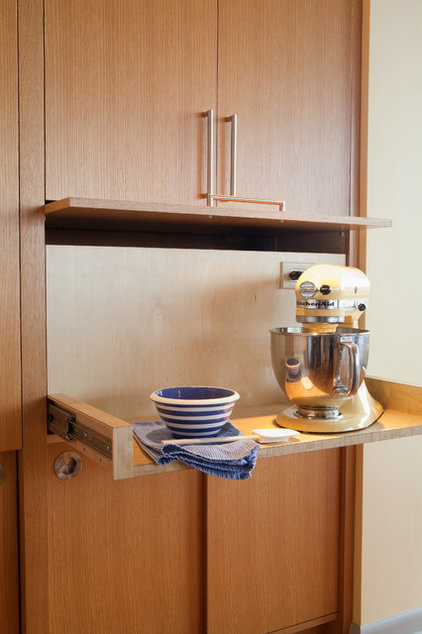
Also, have you ever made your own pasta? It takes a long time. So maybe a pasta maker is not something you need on a regular basis.

Also avoid gadgets that promise to do too many things. A multiuse gadget will likely do 10 tasks poorly, while 10 solid hand tools will perform great.



Sleep on it. Never give in to a late-night infomercial or cooking demonstration on the spot. With any investment — no matter what the cost — give yourself time to really think about how important the gadget will be to you. Ask yourself the aforementioned questions first.
User 574steele has a great tip: “Before purchasing a gadget, check out the local thrift shops. If they have a zillion electric yogurt makers, they probably aren’t worth buying.”
And please, don’t give people gimmicky gadgets as gifts. If you don’t use one, chances are they won’t either.
Edmonton House Repairs And Upgrades: How Much Will They Cost?
Sunday, February 9th, 2014During the process of buying or selling a home, your clients often learn about recommended or required repairs and upgrades. This can happen as a result of the home inspection as well as your expert knowledge of your market and comparable homes. Of course, the first thing homeowners want to know is, “How much will that cost?”
Pillar to Post is pleased to offer our Residential Construction and Remodeling Estimates cost guide, which provides estimated cost ranges for repair and/or replacement of the major systems and components in a home. It also includes general guidelines for the life expectancies of those systems. This information can help your clients make informed decisions when they’re considering home repairs or improvements, and is especially valued by homeowners before their property is listed. Below is just a sampling of our list of estimated costs for hundreds of repairs/upgrades.
Floors |
|
| Hardwood Floor Refinish | $2-$5 / sq. ft |
| Carpet-clean | $100 / room |
| Ceramic Tile | $5-$10 / sq. ft |
Kitchen |
|
| Renovation | $7,500 + |
| Counter-laminate | $40 / lin. ft |
| Kitchen counter-marble | $75 / lin. ft |
Security System |
|
| Alarm System | $2,500 |
| Alarm Monitoring | $30 / month |
Deck |
|
| Pressure Treated | $15-$25 /sq. ft |
| Custom Designed & Built | $50-$75 / sq. ft. |
Windows |
|
| Skylight | $750 and up |
| Thermal Glass (existing frame) | $30 / sq. ft. |
These estimates reflect the average basic costs for supplies and installation of building materials in United States and Canada. Costs may vary depending on regions, upgrades, complexity, and disposal fees.
Source: Pillar to Post Newsletter






